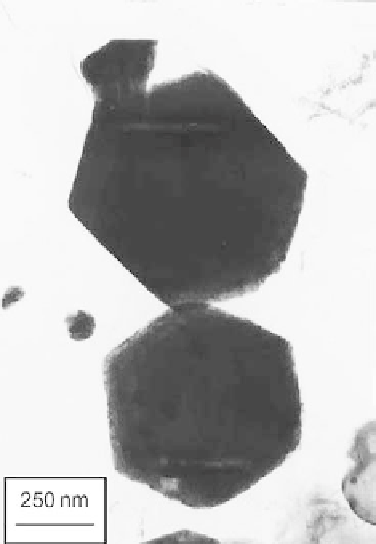Geoscience Reference
In-Depth Information
Figure 10.7 TEM image of Ag compact
with the addition of PVP in the reaction
system.
Source: Photograph Courtesy Prof.
Y.T. Qian.
AgPd, and AuPt can be applied in small-scale electronic devices. The authors have
used a polymer
Cu alloy nanoparticles at about
80
C. The average diameter of the particles is about 12 nm. The most vital factor
in the preparation of these nanoparticles is the simultaneous reduction of nickel and
copper metals, which enables the ready interdiffusion of the different atoms.
In recent years, supercritical conditions have provided reactions for synthesizing
nanoparticles of Ag, Au, Pd, In, Pt, Si, Ge, Cu, etc., and are becoming very popular
as a consequence of fast kinetics and rapid particle production with the shortest
residence time. There are several reports on the preparation of nanoparticles under
supercritical water conditions. The reader can refer to Refs
[58
surfactant to obtain these Ni
61]
.
Metallic nanoparticles and QDs are finding applications in biosensors. These
nanoparticles require hydrophilic surface moieties in order to be compatible with
biomolecules. Hydrothermally prepared nanoparticles are particularly suited to
biotech applications because the nanoparticles are hydrophilic due to surface
hydroxyl groups. However, these hydroxyls often influence the properties of inter-
est in the nanoparticle (e.g., reduce the quantum yield of QDs or oxidize the
surface of metals). Other solvothermal routes, however, can be used to prepare
nanoparticles which, upon the addition of surfactants, are made hydrophilic. Gold
nanoparticles are of particular interest because of their inert nature. Monosized
gold nanoparticles have been synthesized under solvothermal conditions by several


